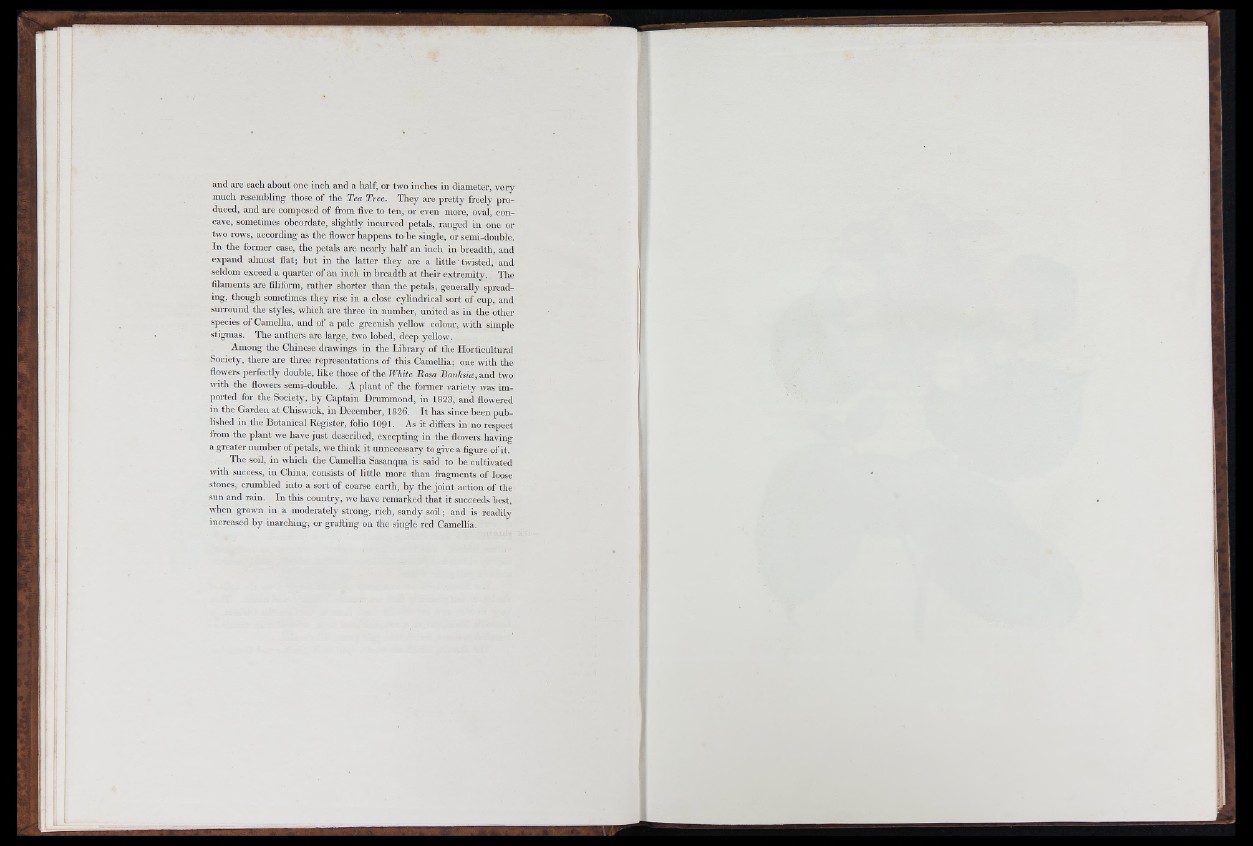
s a t t — a ^ i r i n n i - 1 w
and are each about one inch and a half, or two inches in diameter, v e ry
much resembling those of the Tea Tree. They are p retty freely produced,
and are composed of from five to ten, or even more, oval, concave,
sometimes obcordate, slightly incurved petals, ranged in one or
two rows, according as tlie flower happens to be single, or semi-douhle.
in the former case, the petals ai-e neai'ly h a lf an inch in breadth, and
expand almost flat; b u t in the la tte r they are a little ' twisted, and
seldom exceed a quarter o f an inch in breadth a t th e ir extremity. The
filaments are filiform, rather shorter than the petals, generally spreading,
though sometimes they rise in a close cylindrical sort of cup, and
surround the styles, whicli are three in number, united as in the other
species of Camellia, and of a pale greenish yellow colour, with simple
stigmas. The anthers are large, two lobed, deep yellow.
Among the Chinese drawings in th e Library o f th e Horticultural
Society, there are three representations of this Camellia; one with the
flowers perfectly double, like those of the White Rosa Buii/isiVe, and two
with the flowers semi-double. A plan t of the former variety was imported
for the Society, by Captain Drammond, in 1823, and flowered
ill the Garden a t Chiswick, in December, 1826. I t has since been published
in the Botanical Register, folio 1091. As it difiers in no respect
from the plan t we have ju s t described, excepting in th e flowers having
a greater number of petals, we th in k it unnecessary to give a figure of it.
The soil, in which the Camellia Sasanqua is said to be cultivated
with success, in China, consists of little more than fragments of loose
stones, crumbled into a sort of coarse earth, by the jo in t action o f the
sun and rain. In this country, we have remarked th a t it succeeds best,
when grown in a moderately strong, rich, sandy so il; and is readily
increased by inarching, or grafting on the single red Camellia.